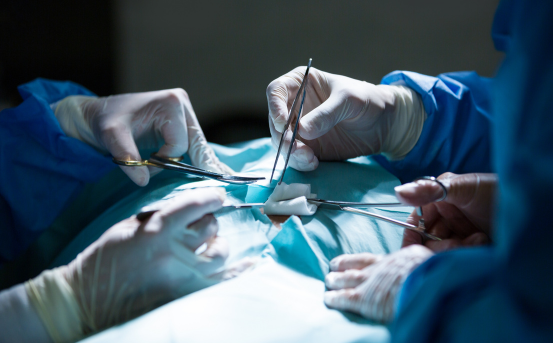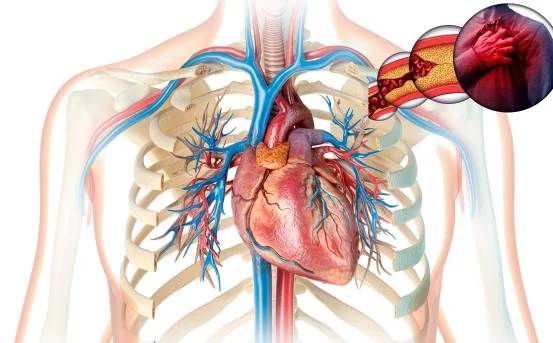Inguinal hernia repair surgery is one of the most common types of hernias, particularly affecting men. It occurs when a part of the intestine or abdominal tissue pushes through a weak spot in the lower abdominal wall or groin area. Early and accurate diagnosis plays a crucial role in deciding whether surgery is required.
Whether you’re dealing with discomfort in the groin or have been told you may have a hernia, it’s important to know how medical professionals evaluate, confirm, and plan treatment for this condition. The diagnosis process not only helps confirm the presence of an inguinal hernia but also determines its severity, type (direct or indirect), and the most suitable course of action be it watchful waiting or surgical repair.
What is an Inguinal Hernia Repair Surgery?
An inguinal hernia develops when abdominal contents protrude through the inguinal canal, a passage in the lower abdominal wall. This condition is often noticeable as a bulge in the groin, especially when standing, coughing, or straining.
There are two main types :-
-
Indirect Inguinal Hernia :- Congenital and more common in males.
-
Direct Inguinal Hernia :- Acquired over time due to muscle weakness or strain.
Understanding the type and severity of the hernia is critical for determining the right treatment plan—including whether inguinal hernia repair surgery is needed.
Why Accurate Diagnosis is Important?
While some small hernias may be monitored without immediate surgery, others can cause complications such as pain, bowel obstruction, or strangulation of the herniated tissue. Timely diagnosis helps :-
-
Prevent emergency surgery
-
Reduce discomfort and pain
-
Avoid complications like bowel ischemia
-
Ensure better surgical outcomes
Common Symptoms of an Inguinal Hernia
Recognizing the symptoms early is key. Some common signs include :-
-
A visible bulge in the groin area
-
Pain or discomfort, especially when bending, coughing, or lifting
-
A heavy or dragging sensation in the groin
-
Swelling around the testicles (in men)
-
Burning or aching feeling at the hernia site
If you notice these symptoms, consult a healthcare provider for a thorough evaluation.
Physical Examination: The First Step in Diagnosis
Most inguinal hernias are diagnosed through a detailed physical exam performed by a doctor. During the exam, the patient may be asked to stand up and cough, which increases abdominal pressure and may reveal a hernia bulge.
The doctor checks for :-
-
Location of the bulge
-
Size and shape of the hernia
-
Reducibility (whether it can be pushed back into the abdomen)
-
Tenderness or pain upon touch
For males, the exam may involve checking the scrotum and inguinal canal to rule out testicular involvement or other issues.
Diagnosis for Inguinal Hernia Repair Surgery
While most inguinal hernias can be diagnosed by physical examination alone, imaging tests are used in unclear or complicated cases. Here are the most common diagnostic tests for inguinal hernias:
Ultrasound (Sonography)
A non-invasive and painless imaging technique, ultrasound is commonly used to detect hernias, especially in children and slender adults.
Why it’s done :-
-
Differentiates hernia from other groin masses
-
Detects hernia contents and movement
-
Ideal for scrotal hernias in men
CT Scan (Computed Tomography)
A CT scan provides detailed cross-sectional images of the abdominal area, useful in diagnosing complex or recurrent hernias.
Why it’s done :-
-
Evaluates hidden or small hernias
-
Identifies complications like bowel obstruction
-
Helps plan surgical intervention
MRI (Magnetic Resonance Imaging)
MRI is used when the diagnosis is uncertain, especially for occult (hidden) hernias that aren’t visible during a physical exam or on ultrasound.
Why it’s done :-
-
Detects small or difficult-to-find hernias
-
Helps assess hernia contents
-
Offers excellent soft tissue detail
Differential Diagnosis: Conditions That Mimic Hernias
Several conditions may present symptoms similar to those of inguinal hernias, making accurate diagnosis critical. These include :-
-
Enlarged lymph nodes
-
Hydrocele (fluid-filled sac in the scrotum)
-
Femoral hernia (more common in women)
-
Testicular tumors
-
Spermatic cord lipoma
A combination of physical exam and imaging helps differentiate between these conditions and inguinal hernias.
When is Surgery Recommended?
Not all hernias need immediate surgery. However, surgical repair becomes necessary if :-
-
The hernia causes persistent pain
-
The hernia is enlarging or becoming more noticeable
-
It is irreducible (cannot be pushed back in)
-
There are signs of bowel obstruction or strangulation (medical emergency)
In such cases, doctors recommend inguinal hernia repair surgery, either through open surgery or laparoscopic (minimally invasive) methods.
Preoperative Evaluation Before Inguinal Hernia Surgery
Before scheduling hernia repair surgery, your healthcare provider will conduct a complete preoperative assessment, which may include :-
- Medical History Review :- This includes any prior surgeries, chronic illnesses, medications, allergies, and lifestyle factors (e.g., smoking, obesity).
- Blood Tests :- Routine tests such as CBC (complete blood count), kidney and liver function tests help evaluate your general health before surgery.
- ECG or Chest X-ray (for older adults or those with heart/lung disease) :- These tests ensure you’re fit for anesthesia and surgery.
- Anesthesia Consultation :- The anesthetist will assess your airway, allergies, and fitness for either general or spinal anesthesia.
Risks of Delaying Diagnosis and Surgery
Delaying diagnosis or surgery for inguinal hernia can result in serious complications :-
-
Strangulation of intestines, cutting off blood supply
-
Incarcerated hernia, where the hernia cannot be pushed back
-
Bowel obstruction leading to nausea, vomiting, and severe pain
These complications often require emergency surgery, which carries higher risks and longer recovery times.
How to Choose the Right Doctor or Hospital
If you’re considering inguinal hernia repair surgery, choose a hospital or surgeon with :-
-
Specialized experience in hernia surgeries
-
Advanced diagnostic and laparoscopic facilities
-
Good postoperative care and pain management protocols
-
Positive patient reviews and success rates
Look for centers that offer same-day discharge, minimally invasive techniques, and personalized treatment plans.
Conclusion
Early diagnosis of an inguinal hernia is essential for successful treatment and avoiding complications. A combination of symptom awareness, physical examination, and imaging tests helps confirm the diagnosis and decide whether surgery is needed.






















